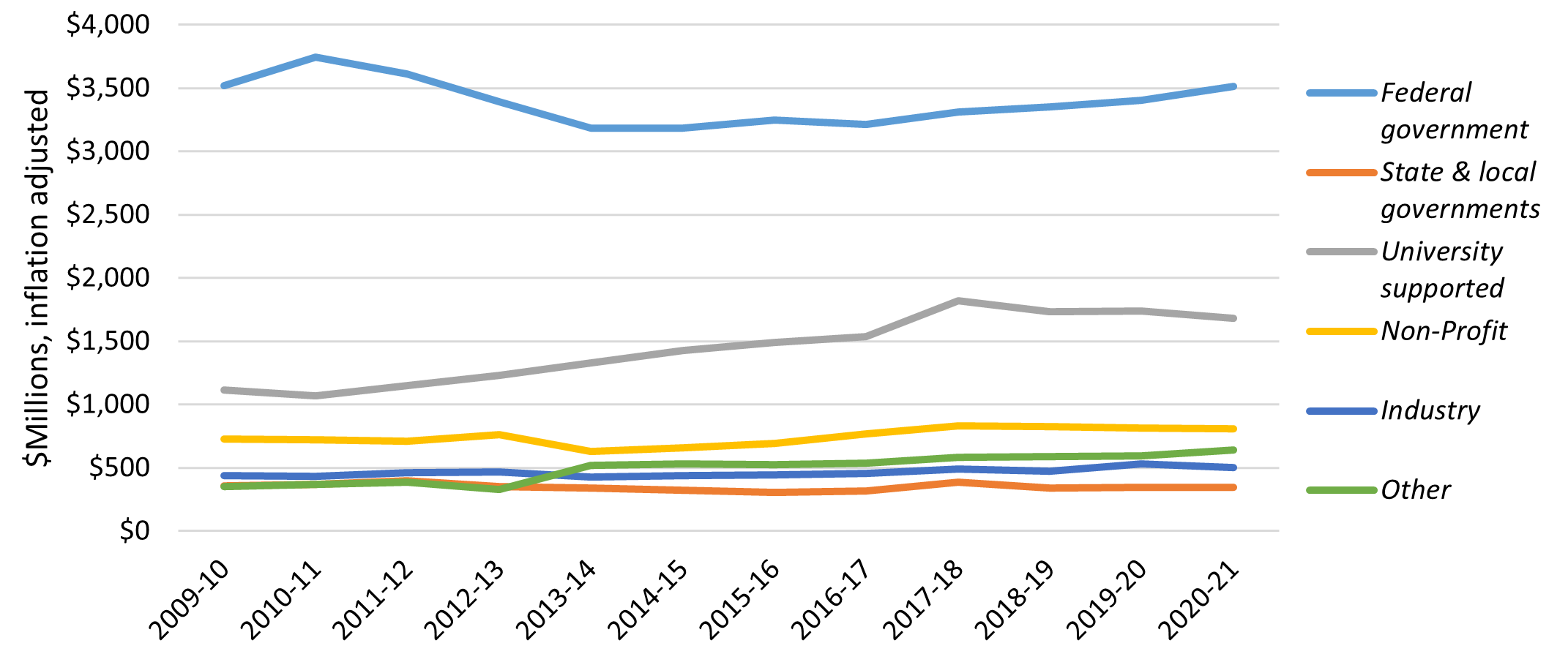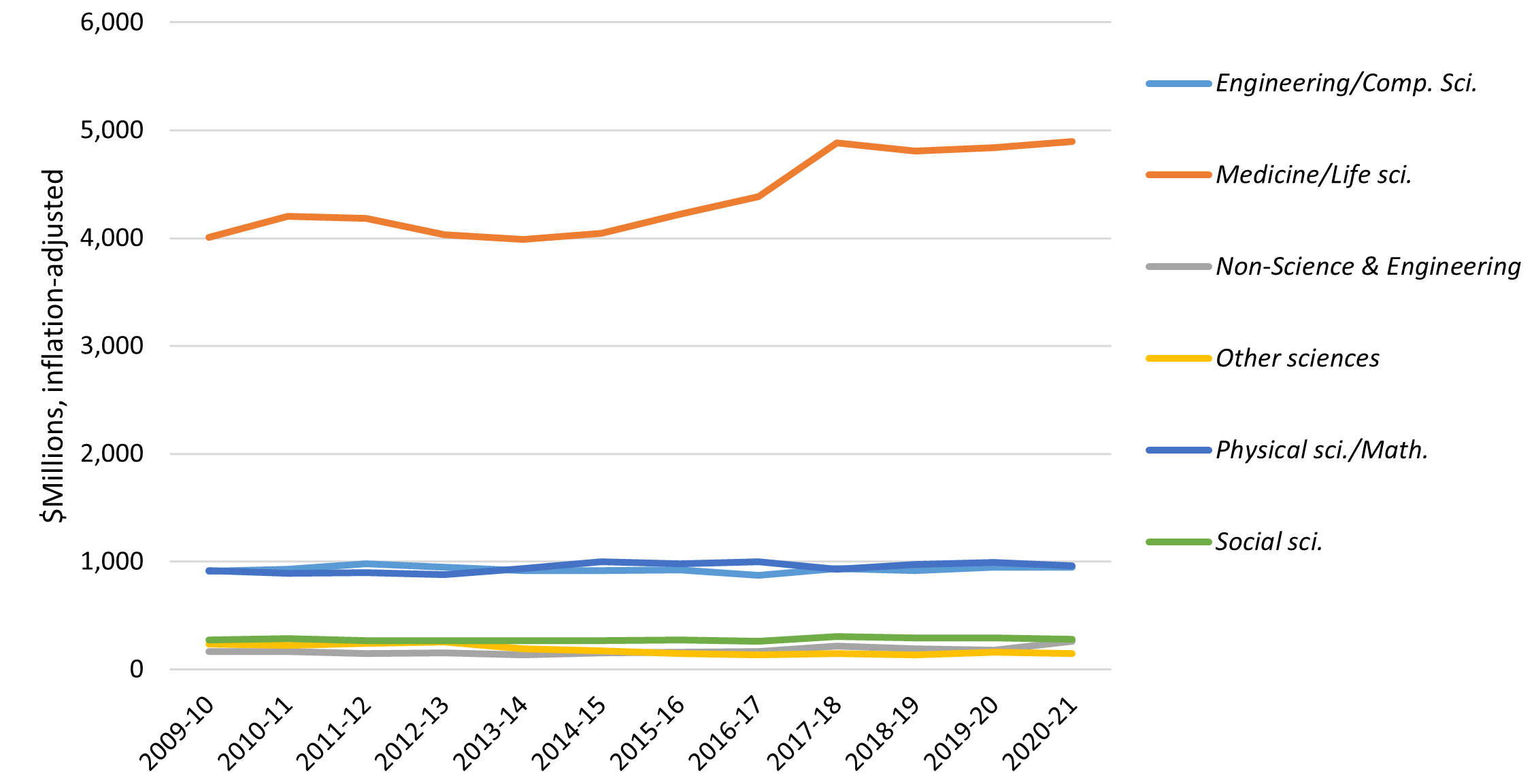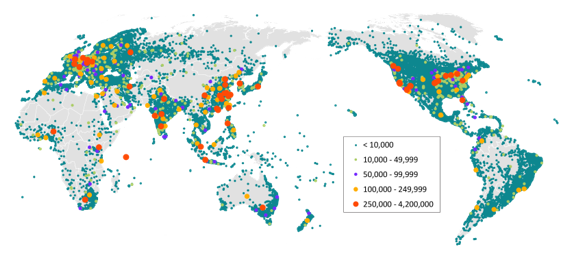Ayana Omilade Flewellen, an assistant professor of anthropology at UC Riverside, is a co-founder of the Society of Black Archaeologists and sits on the Board of Diving With A Purpose.
The work Flewellen does on land largely focuses on how African American women in the post-emancipation era dressed their bodies to negotiate the racism, sexism and classism that shaped their lives. “I’ve come across eyeglasses,” they said. “Buttons with wood, bone, metal or ceramic. Beautiful hand-carved stone beads. When you find these things, you think about the craftsmanship that went into it. When you look at objects made with bone, you think about what people were eating, what they had access to and what they created from the little they had.”
Flewellen also found doll fragments at the Kingsley Plantation and a marble at an archeological site in St. Croix — objects that touched them the most — they said. “It allowed us to think about how children lived during these times,” Flewellen said. “It’s not something we talk about often. These objects and remnants of the past help us think more expansively about the human experience.”
Flewellen’s ground-breaking work is helping transform the field of archeology, said Maria Franklin, professor of anthropology at the University of Texas, Austin from where Flewellen received their master’s and doctorate degrees. “The work Ayana and others are doing is aimed at growing ourselves and training others as well as achieving more collaborations with communities and organizations so we can take archeology out of the ivory tower and out into the world,” Franklin said. “Whether it’s theorizing of the human social condition, doing field work or taking a collection and thinking about it, social justice is the mandate. It should be the goal. We need to see more folks in this field who look like us.”
The California Master Plan for Higher Education designates the University of California as the primary State-supported academic agency for research. UC research contributes to the state and to the nation through discoveries that improve health, technology, welfare, and the quality of life. Research represents the creation of new knowledge, which can be communicated, curated, and cultivated to benefit society.
UC has more than 800 research centers, institutes, laboratories, and programs that span ten campuses, five medical centers, three Department of Energy National Laboratories, and numerous other research facilities.
Breadth of vision has been a virtue of UC’s research since the University’s founding more than a century and a half ago. All forms of intellectual inquiry are represented in the research enterprise: the architecture of atoms and the structure of the universe; the study of human cognition and the development of machine learning; the study of human pathogens and the creation of disease-resistant crops; the understanding of ancient and modern histories, cultures, and languages; and mitigation strategies for climate change. The diversity of this vision contributes to society in ways often hard to predict at the outset.
As one example of this vision, UC’s Research Grants Program Office (RGPO) makes grants of over $100 million annually from a variety of sources, with over 500 active research awards that provide first-mover advantage to UC and California investigators. RGPO grants catalyze advances in new areas yet to be supported on a large scale by federal and other sources; they also aim to enhance research capacity and excellence across California, making it easier to attract and retain outstanding faculty, to further the careers of undergraduate, graduate, and postdoctoral researchers, and to promote research collaborations.Evaluating the research enterprise
This chapter presents a largely quantitative description of UC’s research. The sources of research funding influence the nature of the research. As California’s land-grant university, UC’s research enterprise has always received federal support for research, which today accounts for nearly half of all research funding at UC (9.1.1). Most research funds pay the salaries and benefits of the UC research community, of which faculty are only a small proportion (9.1.2). While UC research spans many disciplines, medical research is the largest expenditure component, and its share has grown over the last two decades (9.1.3). UC performs over eight percent of the nation’s academic research (9.1.4). Compared to other American Association of University (AAU) public universities, UC has a higher rate of research expenditures per ladder-rank faculty, especially at UC campuses with medical schools (9.1.5). Three Department of Energy national laboratories are affiliated with the University of California: Lawrence Berkeley National Lab, Lawrence Livermore National Lab, and Los Alamos National Lab. The national labs conduct research that is vital to the nation’s security, energy future, sustainability, and human health.
This chapter also presents the impact of this research on society. One of the goals of research is the dissemination of important outcomes; the global distribution of downloads from the UC eScholarship repository (9.2.1) indicates how eagerly this knowledge is sought. The frequency with which UC research is cited is another indicator of its quality and importance (9.2.2). UC research advances the economy and global technical leadership through licenses resulting from UC-generated patents (9.2.3).
These measures, however, do not capture the wide range of curiosity-driven research at UC. Quantitative measures emphasize fields that receive sizable funding and produce large numbers of publications, such as medicine, physical and material sciences, and engineering. These measures underrepresent research achievements in the arts, humanities, social sciences, and theoretical sciences, where work leaves less of a financial footprint, and where results are often disseminated in books or performances rather than in journal articles.
Quantitative measures cannot fully capture the multi-faceted ways by which UC research contributes indirectly and over time to the state, the nation, and the world. UC research advances knowledge in ways that directly improve health, technology, and the quality of life. It enables UC graduate and undergraduate students to participate in research and to receive instruction from the world’s foremost researchers, thus enhancing their learning experiences. It makes cutting-edge discoveries readily available to the healthcare, agricultural extension, and other vital public services that UC provides, greatly enhancing their value to the people of California. It creates thoughtful work in the arts and humanities that furthers understanding of our rich diversity and of our place in the world.
UC’s research expenditures
While research expenditures track only some of this activity, they can indicate how research changes in scope and focus over time. They also can provide some relative sense of how research institutions compare to one another.
During 2020–21, expenditures for research at UC totaled $7.5 billion, with nearly half sourced from federal funds. Private sources account for 18 percent — 11 percent from nonprofit organizations and seven percent from corporate sponsors. University funds derived from gifts, endowments, general funds, and other sources provided 22 percent. Nearly half of these total research expenditures went to salaries and benefits. Of this amount, nearly one-quarter was paid to faculty; approximately half was paid to staff researchers and other support personnel; and nearly one-quarter was paid to students and postdoctoral scholars.
Budgets for externally-funded research include both a direct cost component — the actual amount spent on salaries, benefits, equipment, and materials directly linked to the project — plus a percentage to cover the facilities and administration overhead required to support the research project, including debt service, maintenance, and libraries. These facilities and administration costs are called “indirect costs.”
In 2020–21, indirect costs, estimated using the rates negotiated with federal agencies for recovery of indirect costs on research projects, were over $1.9 billion. The true indirect costs of research, however, are typically higher than the rates research sponsors are willing to pay. Rates negotiated with federal agencies are below true indirect costs. Non-federal research sponsors, including corporations, nonprofits, and the State of California, typically have policies that limit indirect cost recovery from them to rates well below the federal rates. The true costs of UC research exceed recovered amounts by hundreds of millions of dollars annually
The research community
Research funds principally pay for people’s time. Of the roughly 172,500 full-time equivalent (FTE) employees at the University in October of 2021, about 25,000, or 14 percent, were paid with research funds.
UC’s research-funded FTE, October 2021
|
Faculty
|
Postdoctoral scholars
|
Student employees
|
Other academic employees
|
Other staff employees
|
Research Total
|
|
2,192
|
4,071
|
4,583
|
3,273
|
10,744
|
24,963
|
|
9%
|
16%
|
18%
|
13%
|
43%
|
100%
|
While faculty serve as principal investigators for research projects, submitting proposals and managing the research, they make up only nine percent of the research community measured in terms of compensated time. However, this figure, principally representing projects with research grants, underrepresents the time faculty spend on research. Virtually every faculty member at UC engages in research, often involving no expenditures other than the faculty member’s time. As in all research universities, career advancement at UC (including tenure), requires a significant body of scholarly or creative work. In October of 2021, the research community included 6,136 postdoctoral researchers (roughly equivalent to 4,071 FTE). As shown in Indicator 5.1.4 of this report, postdoctoral scholars are most prominent in medical research and life science fields.Research results — enhancing instruction
UC research enhances student preparation and experience. Faculty incorporate their research into their courses, providing students with access to insights and discoveries, sometimes before they are published. Postdoctoral scholars, representing one-sixth of the research workforce, contribute to instruction by working with graduate students. Students make up another one-sixth of the research workforce. In October 2021, about 10,084 students were employed as paid research assistants. Though most are graduate students, UC undergraduate students also participate in research; the 2020 UC Undergraduate Experience Survey found that about 36 percent of UC students had been involved in faculty-directed activity other than coursework.Research results — spurring the economy
Many businesses in California are based on technology developed at UC or rely on the skills of UC graduates. Over the past quarter century, UC has secured more licensable patents than any other U.S. research university.[1] Since 1980, over 1,500 startup companies have been founded around UC inventions, with about 85 percent based in California. UC researchers submit nearly five new inventions per day in such diverse areas as agriculture, technology, biotech, and clean energy. The discoveries made through research become public knowledge through publications and the patent process. These innovations enhance industries, stimulate economies, and improve health and well-being.
[1] developer.uspto.gov/visualization/university-patent-count-expendituresResearch results — communicating and curating knowledge
Publications are another way to demonstrate the results of research. This chapter compares the impact of UC research publications to global averages and to peer AAU institutions.
The books, periodicals, and journals in which research findings are published are costly and beyond the reach of many researchers, students, and journalists. To ensure that research findings become public, UC has adopted Open Access (OA) policies that are the most comprehensive of any academic institution in the United States. All UC employees must now deposit their research papers, upon publication, in the eScholarship repository operated by UC’s California Digital Library (CDL) and grant a non-exclusive license to UC to make those materials openly available. CDL is negotiating agreements that reduce or eliminate the costs of publishing OA with publishers, developing models to transition subscription journals to open access, and supporting tools and services to disseminate research.
UC also disseminates its research directly. In 1893, the University’s governing board funded a non-profit publishing program, establishing the UC Press. Today, the UC Press is among the six largest university publishers in the United States, and publishes nearly 200 books and over four dozen multi-issue journals annually. Of the nation’s top university presses, UC Press is the only one associated with a public university.Research results — improving health
Clinical research projects are another example of cultivating new knowledge to benefit society. During 2020–21, UC received grants funding 1,803 new clinical trial research projects in addition to 1,602 projects already underway. These projects represent a crucial stage in the journey from a scientific discovery to an effective treatment. The percentage of research awards devoted to clinical trials has grown significantly over the past ten years, from about four percent in 2010–11 to 14 percent in 2020–21.
UC research has played a significant role in the fight against the COVID-19 pandemic, with UC researchers receiving a cumulative total of over $152 million for COVID-19 research funding in 106 grants awarded by the National Institutes of Health as of September 20, 2021. UC also participated in clinical trials of significant antiviral compounds.UC National Laboratories —science in the national interest
Department of Energy (DOE) National Laboratories carry on research with their own management, budgets, personnel, and fiscal years that are distinct from UC’s own research enterprise. The three University of California-affiliated DOE National Laboratories — Lawrence Berkeley (LBNL), Lawrence Livermore (LLNL), and Los Alamos (LANL) — are among the nation’s premiere multi-disciplinary research and development (R&D) laboratories for energy and national security. The University has played a public service role in directly managing LBNL and participating in the organizations that manage LLNL and LANL. These Laboratories also support UC’s educational mission. LBNL’s budget is about $1.2 billion; LLNL about $2.5 billion; and LANL about $3.2 billion. The labs have a wide range of economic impacts, from the direct salary and benefits paid to employees in the regional economy and procurements from small and large businesses across the nation, to licensing income, US and foreign patents, and research and development awards.
UC Natural Reserve System — science promoting environmental stewardship
The UC Natural Reserve System (NRS) manages a network of protected natural areas throughout California, representing most of California’s major habitat types, including coastal tide pools, inland deserts, lush wetlands, and redwood forests. Its 41 sites include more than 47,000 acres, making it the largest university-administered reserve system in the world. These lands provide undisturbed environments to conduct research, enhance student educational experiences, and provide sites for public service programs.
In 2020, the NRS launched a program enabling undergraduates from backgrounds underrepresented in the field sciences to devote an entire summer to research at one or more NRS reserves. Undergraduates and a UC faculty mentor apply as a team for a Field Science Fellowship to pursue a project of the student’s own devising. The fellowship is intended to give students a taste of a career in the field sciences, develop enduring relationships with mentors, and to help diversify the ranks of environmental scientists.
Looking forward — uncertainties in federal research funding
With federal funding supporting about half of UC research, the vitality of the UC research enterprise is dependent on agencies whose funding is reviewed annually. Hence, long-term prospects for federal research sponsorship are always uncertain. However, UC is proactive in developing strong relationships with these agencies to advise them on funding priorities. The near-term future is promising for funding to support climate and environmental science, artificial intelligence, civil and cyber infrastructure, and medicine.
Whatever changes in priorities are embodied in the federal budget, one certainty is that federal funding is becoming increasingly competitive. At the National Institutes of Health, only one proposal is funded for every five received, compared to about 32 percent fifteen years ago, even though total appropriations for research have increased. UC is competitive in garnering these awards, but this effort comes at a cost. The administrative effort of drafting, reviewing, submitting, and tracking proposals is one of the less-visible costs of conducting research — costs that are not fully recovered from federal sponsors.
For more information
UCOP Office of Research and Innovation (website)
A map of the economic impact of UC research activity in California (pdf)







